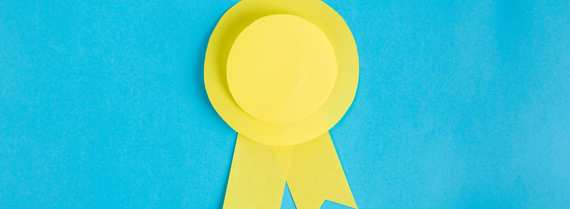
Photo by Hiroshi Kimura on Unsplash
Assumptions are things you think you know - about your team, your product, your market, your business model. More often than not they are almost right - they sound plausible, or they have an element of truth.
A mantra that is often repeated in the Nightingale offices is:
It is a weak point, waiting for someone to step on it to set it off. It may take years, but at some point weak, unfounded assumptions are likely to catch you out.
How to identify and challenge assumptions
Identifying and challenging assumptions is a vital process for creating products and services with long-term, sustained success. Repeating the process many times over the lifetime of the product will root out any new assumptions that have crept in and taken hold. It'll also ensure that the team is on the same page, making decisions based on evidence, rather than guesswork.
Depending on how important and complex the project is, this process can take as little as a half an hour session. It's common for these meetings to have the added benefit of identifying better ways to refine the solution and new untapped markets for products you're already developing.
We've worked with a vast range of companies, supporting and facilitating the process of identifying assumptions.
Here's what we recommend:
Setting up the meeting
We’ve found that the best way to run this meeting is with 3-6 people, which could be your entire company or simply representatives from different departments or specialists. While it is common for a senior team member to run the meetings, it can be useful to have an outside perspective to challenge internal assumptions and help everyone feel comfortable sharing their honest opinions. For our clients, a member of our expert team acts as both facilitator and challenger to broaden and deepen the discussion.
Note-taking is vital to make sure everything is captured. I like to capture everything on a giant whiteboard, but digital solutions like Lucidspark, Miro, or simply a document/spreadsheet can do the job.
Here are the questions we address:
What do you need to know?
The first thing to discuss is what you, as an organisation, need to know to create a successful product. This all centres around your company's core goals and what success looks like for the team. Even if these questions have been answered before, it is always worth revisiting them as they are the foundation on which all other decisions will be based.
Some typical questions you might ask are:
- Who are our (potential) users?
- What problem are we solving for them?
- How do they currently solve that problem?
- How will our solution be better?
- How will it be worse?
The key at this stage is to identify the questions, not to answer them. But this doesn’t mean you shouldn’t be specific and capture as many as possible regardless of whether you can answer them at the moment. No need to prioritise them at this stage.
Some of the things a startup developing a smart beehive would need to are:
- How much are beekeepers prepared to spend on beehives?
- What features are key to making sure our smart beehives offer advantages over traditional beehives?
- What are the main concerns facing beekeepers today?
- What other smart beehives are on the market?
- How successful are they and why?
- What physical environment are beehives kept in?
- When and how do beekeepers make decisions about what beehive to buy?
What do we know and how do we know it?
Next, you need to go back over every question. First, try to answer the question with the knowledge and experience of the people in the room. Then document how you know that this is the answer. Is it something that you've done research into? Is it a gut feeling? Do you have an expert in the room with firsthand knowledge or does someone just vaguely remember hearing something?
The key aim here is to identify what you actually know from what you think you know. It’s OK to not know the answer to any of your questions or to say that your answer is a guess, the important thing is to be honest and not convince yourselves that you are more certain of an answer than you should be.
The danger of assumptions
Why are assumptions so dangerous? Say the answer the team gives to the first beekeeper question above - how much are beekeepers prepared to spend on beehives - is "around £3000." When asked how they know that, no one on the team can say, it's just something they all believe. It turns out, after discussion, that this was a figure someone suggested a year ago and no one challenged it, but the team has no idea if it's correct or not. It could well be correct, but if it's not, the implications for the product and the company could be huge - the potential to make a profit could be non-existent, making the company and the business model unviable. It's vital not to let these key assumptions slip by unchallenged.
Prioritise and discuss
By now you should have a big list of important questions, some with answers and importantly an audit of why you think those are the answers. The next stage is to work out what you should do about any gaps in knowledge or weak assumptions.
First, you should rank questions in order of importance to your success so that you can focus on those that are vital. Then go through the list in order and identify where you either need to know more or need to test what you think you know. The higher up the ranking a question is, the more critical you should be over how you know the answer.
The opinion of one expert in the room is fine for something that’s not vital for success but key business decisions need to be backed up with reliable, verifiable evidence. Without this evidence, you run a high risk of making avoidable mistakes.
The next step involves identifying the most important things to find out/confirm. Sometimes, questions can be answered and assumptions challenged using simple desk research.
More complex or specific questions about your particular users, market, business model or product may require some targeted research, such as speaking to experts, user interviews, or user testing.
Identifying the next steps to take can be difficult - our blog on tackling assumptions with research will help you get started.
If you'd like to talk through your options with one of our experienced consultants, feel free to get in touch.



